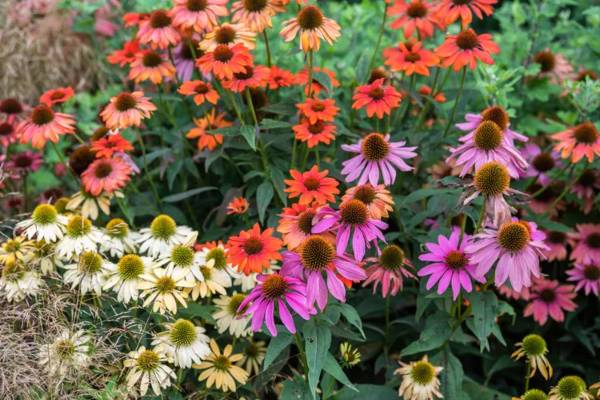Perennial plants are garden-loyal but not always the best bloomers. However, even in their inactive phase, they die back to the ground but their root systems are very much alive and the plants continue to grow when the conditions are stable.
Some perennials are considered to be short-lived, lasting only two or three years. Rose Champion is a short-lived perennial but since it is a self-seeding plant, it appears to live longer. Some perennials like peonies last for more than 100 years despite taking several seasons before they establish.
What is a perennial plant?
Perennial plants are often flowering plants that continue growing for more than two years. These plants can be woody or non-woody, including some trees, fruits and veggies, and flowering plants. Unlike annual plants like marigolds, radishes, and zinnias, whose life cycle completes in one growing season, and biennials like Canterbury bells, which require two growing seasons to mature and set seed, perennials are normally cold-hardy plants that will come back each year in the spring season.
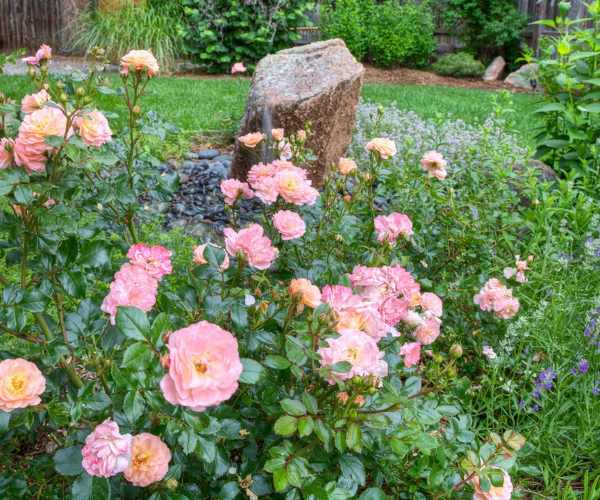
Hardiness Zones and Perennial Plants
Not all plants that can be perennial are hardy in all areas. Some die due to freezing temperatures, very dry conditions, or other problems. This is the reason why hardiness zones are so important. Having a proper understanding of what zone you garden in will allow you to determine what plants survive in your area. Tender perennials, like begonias, elephant ears, and succulents, may overwinter in warm climates, while cold temperatures in northern zones can destroy the plants completely.
Types of Perennials
The term perennial is mostly used for plants which have showy flowers. However, plants such as ornamental grasses, tropicals like canna and caladiums, veggies like rhubarb and artichokes, and other plants may also fall under the category of perennials.
The term herbaceous perennials further narrows the definition of perennials to plants that have soft, green stems that die back in the ground over winter in cold climates. Trees and shrubs are called woody and non-herbaceous perennials. While they may lose their leaves in winter, they remain alive in their roots right up through their stems, branches, and buds.
Also, Read 20 Plants That Thrive in Dry Conditions for Sandy Soil
How to identify perennials?
It may be hard to distinguish a perennial from an annual plant unless you have the seed packet or tag from the nursery pot. Apart from the lifespan thing, here are a few things that you should know:
- Perennial plants bloom for shorter periods than annuals.
- Perennials grow slower than annuals.
- Perennial plants may produce fewer blooms in their early years versus the showier blooms of annuals.
- You may also have an evergreen perennial that will keep its leaves year-round and does not die back in the winter like a herbaceous perennial.
Caring for perennials
Caring tips for perennials differ from the annual plants but being carefree doesn’t help. Most of these plants require at least some pruning and feeding to remain healthy so that they can survive several years.
- Division: While replanting perennials every year, like annuals, is not necessary, most of them need to be dug up and divided to maintain robustness. Some perennials need to be divided every few years and some like peonies, do not need division unless you want more plants.
- Pest Patrol: It is important to check your perennials regularly throughout the growing season for pests and diseases.
- Deadheading: Deadheading the spent perennial flowers like many annuals will repeat bloom. Even if you deadhead the spent flowers of non-repeat bloomers like Hosta and Astilbe, it is good for the plant as it provides energy to its roots and leaves rather than setting seed.
- Seasonal Clean-up: Pruning and removing the old foliage from herbaceous perennials that die back in the winter is necessary as it allows to tidy the plant before the new growth begins. You can do so in the fall or spring, but check the instructions so you don’t accidentally cut off forming flower buds.
Choosing Perennials for the Garden
Before buying perennials, know the sunlight and shade patterns of the area where you are planning to plant them. After observing that, you can correctly select perennials that need sun or shade. Know about your wildlife population too because you may want to grow deer-resistant perennials. Additionally, since perennials’ bloom time is short, make sure to add some eye-catching non-blooming foliage. Below are some examples of perennials to choose from (ensure know your hardiness zone before purchasing):
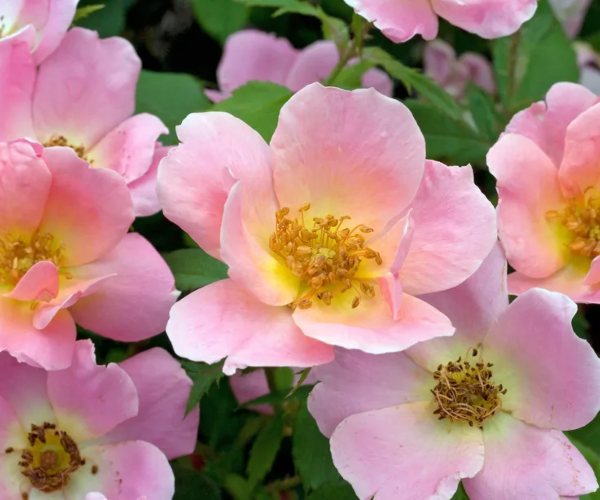
- Flowers: Coneflowers, ice plants, and Shasta daisies are all flowering perennials with longer bloom times than the average perennial.
- Shrubs: Azaleas and peonies are flowering perennial shrubs. Wintercreeper and false cypress are examples of non-flowering perennial shrubs.
- Groundcovers: Sweet woodruff and creeping thyme are flowering perennial groundcovers. Japanese pachysandra is a non-flowering evergreen perennial groundcover.
- Grasses: Most ornamental grasses are perennials, too, including fountain grass and pink muhly grass.
5 Longest-Flowering Perennials – For Blooms In Spring, Summer And Fall
1. Salvia
Salvia makes a great addition to beds and borders with shades of blue, purple, pink, or white flower spires. Some start blooming in late spring to fall. One big use of these flowers is that they are magnets for pollinators. There are hundreds of salvia varieties but the longest-bloomers are ‘Amistad’, ‘Autumn Sage’, ‘Black and Blue’, ‘Hot Lips’, ‘May Night’, and ‘Victoria Blue’. Most of these varieties are low-maintenance and the drought-tolerant plants require minimal watering and fertilization.
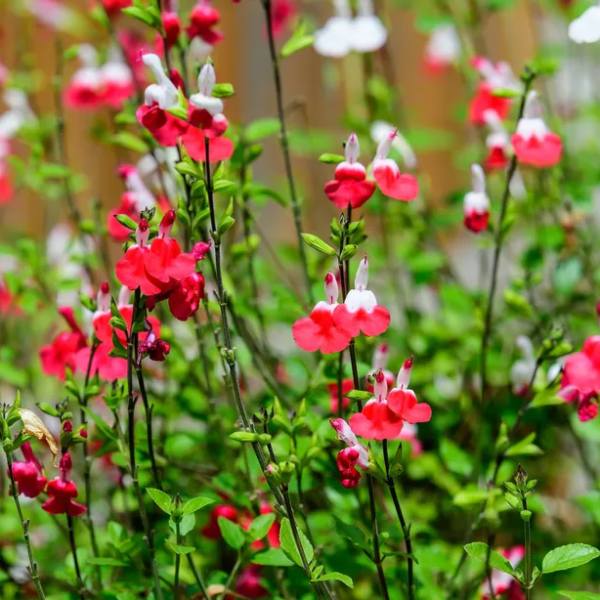
2. Hardy Geranium
Do not confuse Hardy Geranium with annual geraniums, which are Pelargoniums. Hardy Geranium, also known as cranesbill is an easy-to-care perennials that have pink, blue, purple, and white shades. It attracts pollinators but is deer-resistant.
This blooms from late spring to the fall. The longest-flowering varieties include ‘Ann Folkard’, ‘Elke’, ‘Mavis Simpson’, ‘Orion’, ‘Patricia’, and ‘Rozanne’. There are options for USDA hardiness zones 3-9, in full sun to shade. While they require regular watering after planting, they are drought-tolerant once established.

3. Coreopsis
Coreopsis also known as tickseed produces pretty daisy-like flowers that bloom between late spring and early summer, and go on into the fall. Blooms come in delightful shades of bright yellow, pink, or red. Native to North America, this plant is drought tolerant attracts pollinators, and grows in a variety of soil types, as long as it is well-draining. Plant in full sun for better growth.
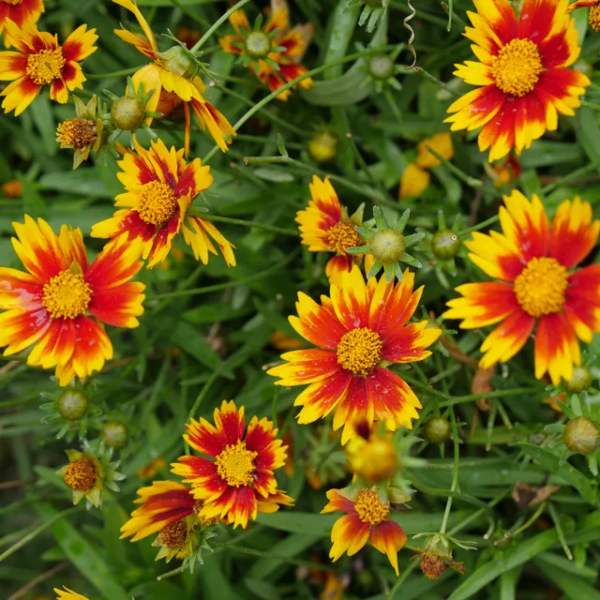
4. Catmint
Catmint or nepeta is an aromatic herb that makes your garden look beautiful. It produces lavender-blue flowers that bloom from late spring to early fall. It is a magnet for bees and butterflies. It looks ideal for edging borders or works wonderfully as a companion plant on the vegetable plot to deter pests. Catmints are drought tolerant once established but need deadheading to promote constant blooms.
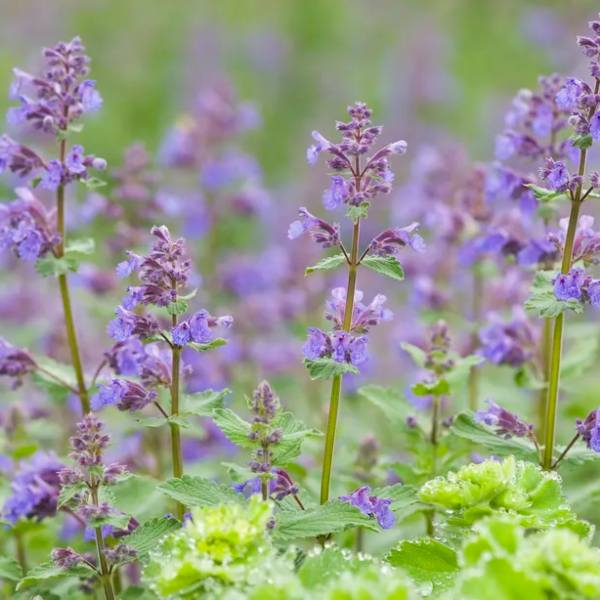
5. Coral Bells
Many grow Coral Bells for their stunning foliage but their gorgeous tall spikes of colorful flowers are the main attraction. They bloom from late spring to summer and some varieties even bloom until the first frost.
The longest-flowering varieties include ‘Berry Timeless’, ‘Coral Forest’, ‘Firefly’, ‘Paris’, ‘Peppermint Spice’, ‘Red Lighting’, ‘Ruby Bells’, and ‘Southern Comfort’. These plants thrive in partial shade and love well-draining soil. Prune in spring and remove spent flowers to encourage constant blooming.

FAQs
Q: What is the best soil type for perennials?
A: Planting perennials straight into the native soil will produce bad results. A blend of 50% organic compost and 50% aged pine bark mulch offers a great formula for a lively and productive perennial garden bed. The compost provides the soil with essential nutrients such as nitrogen, phosphorus, and potassium.
Q: What are perennial crops?
A: Perennial crops are perennial plant species that are cultivated and live longer than two years without the need to be replanted each year. Naturally perennial crops include many fruit and nut crops; some herbs and vegetables also qualify as perennial.
Also, Read Nature’s Curtain: 10 Hedge Plants to Enhance Privacy at Home
